EXPLORE ICONIC MADISON COUNTY
ADD HOMEGROWN PRODUCE TO YOUR PLATE
TASTE GRAZIANO'S ITALIAN HERITAGE



EXPLORE ICONIC MADISON COUNTY
ADD HOMEGROWN PRODUCE TO YOUR PLATE
TASTE GRAZIANO'S ITALIAN HERITAGE


IN THE SUMMER ISSUE OF FRESH PICKINGS MAGAZINE, YOU’LL FIND STORIES THAT CELEBRATE THE INCREDIBLE FOOD, FARMS AND FAMILIES THAT MAKE IOWA A SPECIAL PLACE TO LIVE.
THIS QUARTERLY PUBLICATION IS COURTESY OF THE IOWA FOOD & FAMILY PROJECT — AN INITIATIVE INVITING IOWANS TO EXPLORE HOW FOOD IS GROWN AND RAISED AROUND THE STATE AND MEET THE FARMERS WHO MAKE IT HAPPEN; 24/7, 365 DAYS A YEAR.
WE NETWORK WITH NEARLY 35 FOOD, FARMING AND HEALTHY LIVING ORGANIZATIONS WHO ARE PROUD OF IOWA’S HOMEGROWN FOODS AND HOMETOWN VALUES. YOU CAN LEARN MORE ABOUT OUR PARTNERS ON PAGE 4.
Raising a family and growing food both take strong roots and tender loving care. A Boone family has united these dual roles to thrive.
For generations, chefs and home cooks alike have relied on Graziano’s iconic medium-hot sausage to elevate the flavor of their favorite dishes.
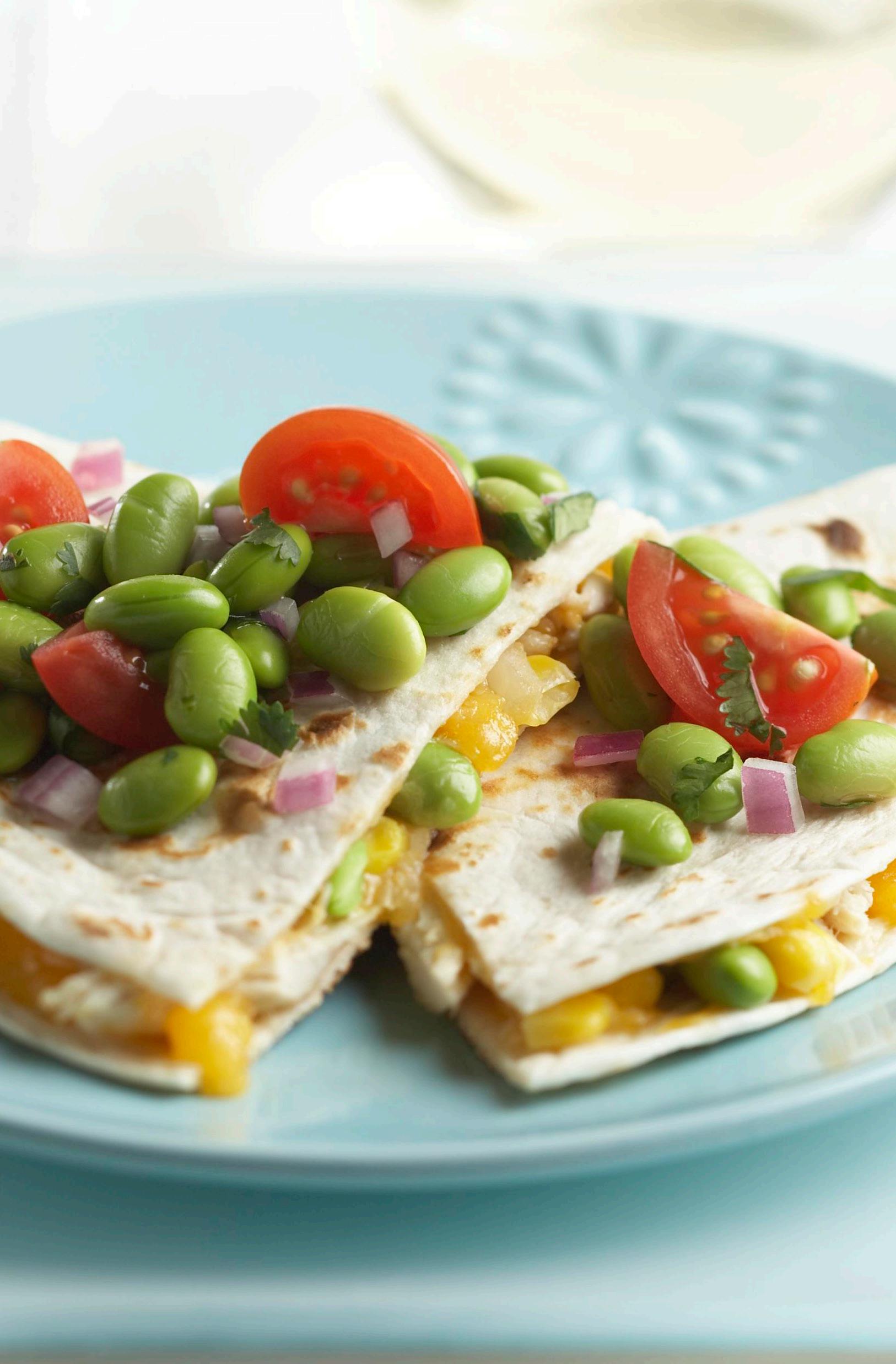
An innovative new initiative helps farmers be a solution for environmental challenges.

With its rolling hills, native grasses and botanical gardens, Madison County bridges charm with character to flourish.
Soyfoods are gaining popularity for being nutritional powerhouses and fitting into diets for people of all ages.

BROUGHT TO YOU BY THE IOWA FOOD & FAMILY PROJECT
EDITOR
KELLY VISSER
PHOTO EDITOR
JOSEPH L. MURPHY
CREATIVE
ASHTON BOLES
WRITER
AARON PUTZE, APR
ANN THELEN
Thelen Public Relations
CRISTEN CLARK
Food & Swine
HALEY BANWART
Farm Roots & Chore Boots
DARCY DOUGHERTY MAULSBY
Darcy Maulsby & Co.
CARL PETERSON
Moss Hill Communications
FOUNDERS
Iowa Soybean Association
Iowa Pork Producers Association
Iowa Beef Industry Council
Midwest Dairy
Iowa Corn Growers Association
Iowa Poultry Association
Iowa Egg Council
Iowa Turkey Federation
The Soyfoods Council
SUPPORTERS
Anderson Erickson Dairy Cargill
Cookies Food Products
Corteva Agriscience
Earl May Nursery & Garden Center
Farm Credit Services of America
Heart of America Group
Hy-Vee
Iowa Grocery Industry Association
Iowa Machine Shed Restaurant
Iowa State Fair
Jethro’s BBQ
Key Cooperative
Latham Hi-Tech Seeds
Live Healthy Iowa
MercyOne
Subway
REQUEST YOUR MAILED SUBSCRIPTION AT IOWAFOODANDFAMILY.COM/MAGAZINE/SUBSCRIBE
Thank you to the Iowa Soybean Association, Iowa Pork Producers Association, Iowa Beef Industry Council, Midwest Dairy, Iowa Corn Growers Association, Iowa Egg Council, Iowa Turkey Federation, Farm Credit Services of America, Cargill, Corteva Agriscience, Key Cooperative, MercyOne and Live Healthy Iowa for the financial investment that makes this publication possible.
Fresh Pickings is published four times a year by: Iowa Soybean Association, 1255 SW Prairie Trail Parkway, Ankeny, Iowa 50023
For advertising information, please contact kvisser@iasoybeans.com
Advertising space reservations must be made through the above contact information. In consideration of the acceptance of the advertisement, the agency and advertiser must, in respect of the contents of the advertisement, indemnify and save the publisher harmless against any expense arising from claims or actions against the publisher because of the publication of the content of the advertisement.
Comments: iowafoodandfamily.com/magazine/feedback
savor. And a nightly family walk to check on road construction progress is a new form of entertainment.
Recent crises have made me more deliberate, thoughtful and thankful.
It shouldn’t be a surprise that family and food are what I’ve held onto through these difficult times … after all, I work for an initiative called the Iowa Food & Family Project (Iowa FFP)!

I recently learned the Greek root of the word “crisis” is to sift. And my, oh my, the past few months have forced us to sift.

Beloved summertime milestones scratched off the calendar. Classrooms emptied and retailers shuttered. Early visions for what the year would bring are long gone. No matter if you’ve been impacted in big or small ways, these losses have real impacts on our lives.
But instead of reeling about what has been sifted out, I’m working to flip my perspective and focus on what remains in the sieve.
For me, it’s clear that family and food remain.
For the first time ever, simple FaceTime calls are highlighted on my weekly calendar. A new chocolate chip cookie recipe is an event to anticipate. A favorite takeout meal or being able to eat out again are treats to

This reflection has reaffirmed the importance of celebrating food and family. In good times and bad, the Iowa FFP can be an ongoing reminder to cherish these core values. Food and family have the potential to bring us together, make us more human and provide hope for a brighter future.
The stories in this issue of Fresh Pickings honor a cross-section of the foods and families that make our state shine. Beyond serving as a tribute to the people and places featured, each story is also designed to be an inspiration that you can bring back to your own kitchen tables, daily routines and family road trips.
As you continue to work through these turbulent times, I hope that you’ll see it as a chance to sift. And I hope that you, too, will find that food and family are priorities that remain true today and in the future.
Enjoy the issue,
We want to hear what you think about FreshPickings!
Share your thoughts at iowafoodandfamily.com/magazine/ feedback for your chance to win a $100 Hy-Vee gift card.
Trendy “bowls” have been on the food scene for a couple of years and still have everyone’s attention.
At our house, they are a fresh and fulfilling meal that perfectly tops off a hot summer day. We love pairing grilled fare with an interesting variety of other healthy additions to create customizable bowls.
• Grilling meats to their desired temperature is much easier with a digital instant read thermometer. And its use isn’t limited to the grill. Detect the temperatures of banana bread and birthday cakes to ensure doneness and you’ll never rely on the toothpick test again!
Cristen Clark is a pig farmer, creator of the Food & Swine blog and an award-winning baker and cook. She lives on a farm near Runnells with her husband Mike and children Halle and Barrett.

Making flavor-packed bowls is easy with these steps:
Build a generous base. Fresh crisp greens, cooked grains, rice, beans or pasta make a great base for the bowl. Situated at the bottom, the base will sop up any juices from the other components and dressings, so you don’t leave any flavor behind.
Add a combination of vegetables of various colors. Not only will the bowl appear more appetizing with an array of colors, it will taste great, too! Sauté, grill, roast or steam veggies of your choice. It’s a great way to use fresh garden produce or farmers’ market finds!
Layer on the protein. Try steak pieces, pork tenderloin, turkey breast or other tasty Iowa-raised products. As you’re grilling, keep these tips in mind:
• Set meat out a few minutes prior to cooking to de-chill, and pat dry before seasoning. This will help cook the protein evenly and encourage desirable, flavorful browning.
• While the grill is fired up, add a couple extra pieces of meat. The leftovers can be refrigerated and then sliced, to offer a chilled, refreshing protein layer to future bowls.
Dress the bowl by adding other interesting items of various textures. Make a quick homemade dressing for drizzling, and add a variety of fresh herbs, cheeses, nuts, edamame or pickled vegetables to complete the dish.
Trendy bowls can take on a variety of ingredients to fit any flavor profile you crave!

STEAK AND ROASTED VEGETABLES
• 1½ pounds steak, cut to 1½-inch cubes (sirloin, flank, skirt, flat iron or ranch)
• 1½ teaspoons Greek seasoning or seasoned salt
• 2 tablespoons butter
• 2 small zucchini, sliced to ¼ -inch rounds
• 2 small red onions, halved and cut into thirds
• 2 bell peppers, cut into 1-inch pieces
• 1 small eggplant, sliced ½-inch thick, cut into wedges
• 2 cups cherry tomatoes
• ¼ cup olive oil
• 1 teaspoon sea salt
• ½ teaspoon black pepper
DRESSING
• 2 cloves garlic, minced
• ½ teaspoon sea salt
• ¼ teaspoon ground black pepper
• ¼ teaspoon red pepper flakes
• 1 tablespoon Dijon mustard
• ½ cup olive oil
• 2 tablespoons freshly squeezed lemon juice
• 2 tablespoons red wine vinegar
• 2 tablespoons fresh herbs or 2 teaspoons dried herbs (a combination of parsley, dill and oregano)
GARNISH
• ½ cup feta cheese, crumbled
• ¼ cup chopped fresh herbs (a combination of parsley, dill and oregano)
• 1 can chickpeas, drained and rinsed
Preheat oven to 425 degrees F. Toss sliced vegetables in olive oil and sprinkle with salt and pepper. Spread evenly over two sheet pans and roast in oven until edges are browned,
around 20 minutes depending on actual thickness. Remove from oven, set aside to cool.
Sprinkle steak pieces with Greek seasoning. In a skillet over medium-high heat, add butter and cook steak pieces for 2 minutes, flip steak pieces over. Cook steak pieces 2 minutes more then remove from heat.
For the dressing, combine all ingredients and mix well. Mix 1/4 cup of dressing with drained and rinsed chickpeas and set aside.
Assemble in 4 serving bowls, and divide roasted vegetables evenly. Add steak bites. Drizzle a tablespoon of dressing over veggies and steak pieces in each bowl. Garnish with herbs, chickpeas and feta cheese. Serve warm or chilled on a bed of greens or grains — or for breakfast with a poached egg on top!

When the sun shines brighter and the days are longer, it’s often easier to be motivated to exercise. Being immersed in Iowa’s lush and vibrant outdoor landscape is therapeutic for the body and soul.
When your skin is exposed to sunlight, it makes vitamin D from cholesterol. Vitamin D has many important roles, including helping your body absorb calcium and phosphorus – minerals essential for maintaining strong and healthy bones. The team at Live Healthy Iowa shares five easy tips for safely soaking up the benefits of the sunshine vitamin.
1. TIME IT RIGHT.
Avoid the hottest part of the day, which is typically 10 a.m. to 3 p.m. On hot, sunny days, plan to exercise in areas that offer some shady respites. Exercising first thing in the morning starts
the day off right while exercising in the evening boosts metabolism before going to bed.
2. PROTECT FROM THE DAMAGING RAYS.
Wearing sunscreen is a must, especially when you have more skin exposed with summer clothing. Try SPF workout clothes for an added layer of protection from the damaging rays. Top off lightweight, light-colored clothing with a hat or visor and sunglasses.
3. FOCUS ON THE PROPER ACTIVITIES.
When it’s a scorcher outside, focus on lower-intensity cardio activities. Walking just 30 minutes a day can increase cardiovascular fitness, reduce excess body fat and boost muscle endurance. Gardening, swimming and running through the sprinkler with the kids are great activities that burn calories.
4. TAKE ADVANTAGE OF IOWA’S TRAILS. More than 2,000 miles of trails throughout the state offer scenic routes for biking and hiking, providing excellent opportunities to get the whole family involved. Many trails are shaded by trees making the treks more comfortable.
5. HYDRATE ALL DAY.
Since your body is 65% water, sunshine and heat can quickly lead to dehydration. Staying hydrated is vital all day, not just when exercising. In addition to drinking water, reach for some dairy goodness! Chocolate milk contains an optimal carbohydrate-to-protein ratio, making it a great option to choose to help refuel tired muscles. It’s known to be twice as effective as a typical sports drink and is often fortified with vitamin D.

 By Haley Banwart |
Photos by Joseph L. Murphy
By Haley Banwart |
Photos by Joseph L. Murphy
Nothing beats the summer heat like your favorite ice cream treat.
Ice cream parlors are small-town staples that are found in every corner of the state. In Polk City, entrepreneurs Joe and Ashley Fandel recently opened a cozy establishment called The Creamery.


“Opening an ice cream shop was a lifelong dream we shared as a family,” Joe says. “We always loved going out for ice cream together, and we joked about having a store of our own.”
After putting down roots in Johnston with their four children, the Fandel’s vision slowly came to life when they found the perfect location for their startup in nearby Polk City.
Conveniently located on the town’s historic square, the brick building Joe and Ashley set their sights on had potential, despite its various states of disrepair. The vacant structure had formerly operated as a gas station, boutique and art studio before
its most recent history as an auto detailing service.
Willing to look past the imperfections, the couple took a leap of faith to turn their dream into a reality.
In the spring of 2018, renovations began, working from the inside out.
“We wanted to keep as much of the original character of the building as possible and pour some love back into the property rather than bulldoze it down,” Ashley says. “We put our blood, sweat and tears into the project.”
The transformation from rustic auto shop to charming ice cream parlor wasn’t easy. The couple didn’t have a remodeling background, so they worked many late nights and learned along the way.
The finishing touches were completed in time for The Creamery’s grand opening June 17, 2019.
“When we opened, we just hoped someone would show up,” Ashley says. “We didn’t expect to receive the outpouring of community support.”
The couple says the shop has become part of the special smalltown atmosphere. It’s a place where families can meet after church or kids can ride their bikes to buy a scoop with their ice cream money. Hard pack and soft serve ice cream along with frozen yogurt are among the sweet treats featured at The Creamery, all sourced from local dairies and vendors across the state. Banana pudding or blueberry cheesecake are popular premium hard pack flavors. Each treat can be enjoyed plain or paired with a fun menu of mix-ins and toppings.
Ashley adds, “When you go out for ice cream, you go for happiness. It’s fulfilling to bring that experience to the community and create a place for friends and families to gather.”
A group of high school boys harvest sweet corn at Rinehart’s Family
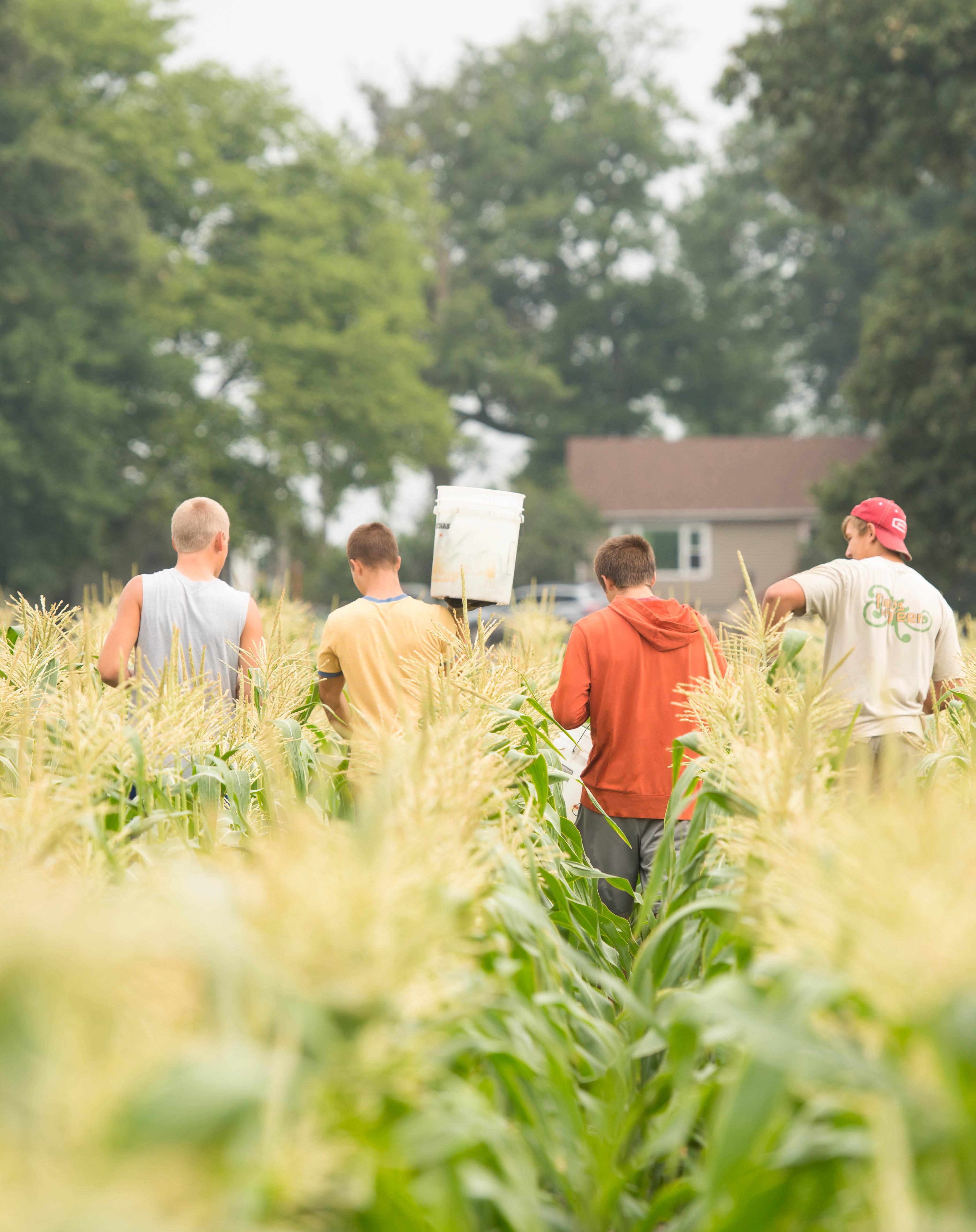 Farm near Boone.
Farm near Boone.
RINEHART’S FAMILY FARM HAS A PASSION FOR PRODUCE
By Ann Thelen | Photos by Joseph L. MurphyThere are a lot of similarities between growing food and raising a family. Both take strong roots, nurturing and tender loving care. Greg and Polly Rinehart, farmers who live between Boone and Ogden and parents of 10 children, have seamlessly united their dual roles to thrive.

Beyond being traditional soybean and corn farmers, the family also operates Rinehart’s Family Farm and grows 40 different vegetables and fruits. Iowans who have visited the Des Moines’ Downtown Farmers’ Market or Boone Farmers’ Market are likely to have enjoyed the fruits of the Rinehart family’s labor.
Typically, for 28 consecutive Saturdays a year at the Des Moines’ Downtown Famers’ Market, the Rinehart’s canopied tents are filled with three generations of family members. This year, the family temporarily shifted their sales to a drivethru market on the farm. No matter the location, the market stand is a family affair. From the couple’s eight daughters and two sons – and sons-in-law and daughters-in-law – to two dozen grandchildren, the entire family has played a role in the operation.
“All of our children have been instrumental in this business, which we started 35 years ago,” Greg says. “Over the years, there has been a lot of hard work and sacrifice by the kids, but they’ve enjoyed playing a role in bringing this dream to fruition.
“Plus, it helped put them all through college,” he says. As an Iowa State University graduate (’74, Animal Science), it’s no coincidence that the farm’s branding boasts Cyclone colors. “We’re big Cyclone fans around here.”

When visiting their Fifth and Court farmers’ market spot near Des Moines’ historic courthouse, consumers are greeted by Greg’s jovial smile and Polly's welcoming voice. The exuberance and giggles of grandkids, abounding with


endless energy, set the stage for an experience marketgoers flock to, week after week.
“We sell on all four sides of our space, so it takes at least 10 people to run our operation on every market Saturday,” Polly says. “We’re up by 4 a.m. to load everything and arrive in Downtown Des Moines by 6 a.m.”
At least five of those workers –most of which are family – are cooking the family’s signature, farm-fresh breakfast sandwiches. Aptly called Tons of Yum, Lots of Yum and Loads of Yum, the sandwiches live up to their names. The ingredients are flavors of the farm with fresh asparagus, tomatoes, basil and zucchini, thick-cut bacon, cheese and an egg souffle enveloped between tender home-baked focaccia bread.
Family members help patrons during a drive-thru market.“ALL OF OUR CHILDREN HAVE BEEN INSTRUMENTAL IN THIS BUSINESS, WHICH WE STARTED 35 YEARS AGO.”
— Greg Rinehart
As successful as the family’s produce business has been, the couple didn’t originally set out on this path. Greg mostly grew up in Chicago, where his dad worked as a chemist, until his parents eventually moved back to Iowa to farm. Nestled in the beautiful Des Moines River Valley, the property has been a family farm since 1885. After Greg graduated from college, he worked full-time on the family’s century farm, following in the footsteps of his parents and grandparents who once farmed this precious land.
For more than a decade, the farm was typical of many others found in Iowa – barns filled with pigs and long rows of soybeans and corn. Then the
farm crisis of the 1980s hit, and the couple knew they needed supplemental income to stay on the farm and mitigate the price volatility of crops. Instead of seeking off-farm employment, Polly and Greg decided to diversify their sweet corn and produce business. As a growing family, they were accustomed to growing their own fruits and vegetables.
“Our sweet corn was popular, and it gave us the idea to convert some of our row crop acres to produce gardens,” Greg explains. “We started out selling fruits and vegetables at farmers’ markets in Boone, Ames and Des Moines. As the Des Moines market became more vibrant, we focused more heavily on it, and sweet corn is still a star of the business.”
Ranked as one of the top farmers’ markets in the country, the Des Moines’ Downtown Farmers’ Market had humble beginnings. In 1976, with just 15 vendors and an average of 200 shoppers, the market was operated July through September. Today, it supports nearly 300 vendors and an average of 25,000 visitors each Saturday during May through October and more than 100 vendors at the Winter Market in November and December. During the COVID-19 pandemic, the market adapted with virtual and socially distanced solutions for the 2020 season.
The market provides a relaxed environment for consumers to understand how their food is raised and to ask questions.

Today, 100 acres of the Rinehart’s farm are filled with fruits and vegetables and 700 acres are devoted to soybeans and corn. As part of their operation, the family grows sweet peas for Birds Eye®. Founded by Clarence Birdseye, the Minnesotabased company changed the way America eats vegetables, by inventing frozen foods, as found in supermarkets today.
“We can grow early production peas in Iowa before the company starts its pea picking in Minnesota. The company sends its own crew and equipment to harvest the crop,” Greg explains.

Farmers who grow for Birds Eye are committed to exceptionally high-quality standards. Once harvested and immediately transported, the peas are flashfrozen by Birds Eye. Their cell
walls are not damaged, so the frozen peas are nearly identical to fresh in nutrition and taste. Flavor, texture and color are all preserved.
A farm like the Rineharts, which has been in this same family for 135 years, is unequivocally rooted in sustainability.
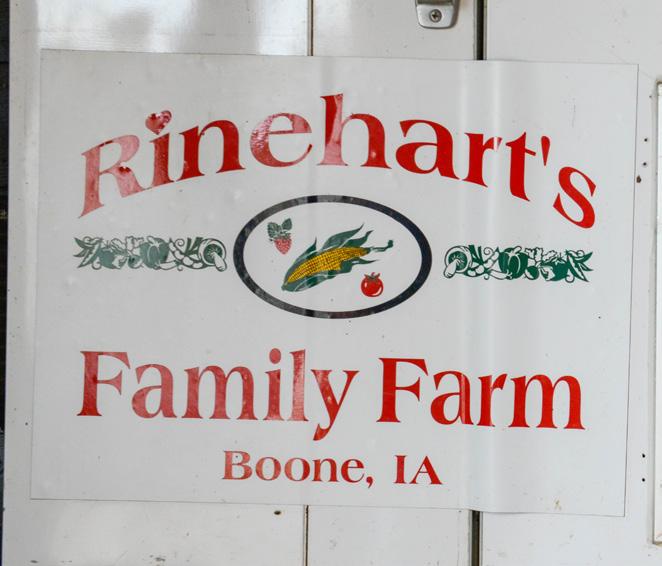
Over the years, Iowa State University’s Department of Horticulture has conducted various trials on the farm to determine the benefits of the cover crops. Like many farmers, the Rineharts use cover crops, such as cereal rye, to keep a cover on farmland between harvest and planting seasons. Grown in between rows of soybeans and corn, these small plants have big benefits for soil fertility and conservation.
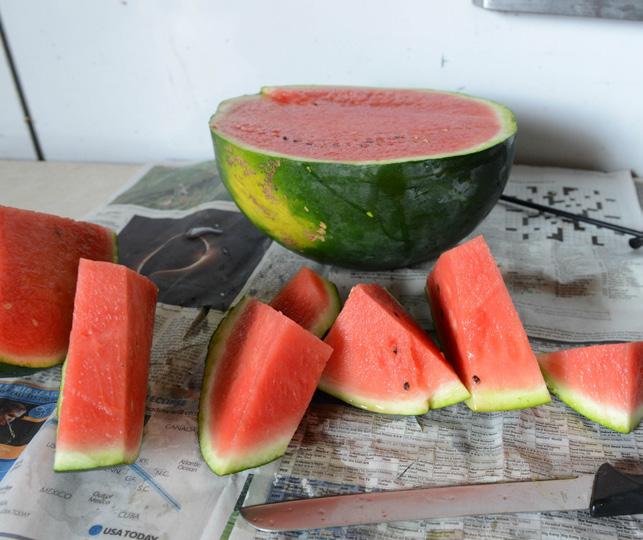
On the vegetable side of growing food, two 30-foot by 96-foot high tunnels are used for raising tomatoes. Because too much rain or heat can cause disease on the vegetables, the high tunnels provide some protection from the elements. Still grown right into the soil, plastic is layered on the plants for a bottom layer of protection, and the tunnels provide the top layer of coverage. With their success in this growing technique, Greg occasionally teaches Iowa State University Extension classes on high tunnels.
As Greg and Polly begin to slowly step away from the crop side of farming, their son Daniel will take over as the next generation to farm the land.
The Rineharts are always eager to share their passion for agriculture
with others. Recently, a student from Valley High School in West Des Moines worked with the family on farmers’ market weekends.
As a result of his experience, the student wrote an article for The Des Moines Register.
He wrote, “Although the Rinehart’s stand was perfectly functional without me, the fact that they still took me on for that summer and let me into their tight-knit family speaks to a genuine level of acceptance and warmth that a tradition of farming – but more important, a tradition of family –can provide."
Family and farming – two words that are synonymous with the Rineharts. It is a legacy that will continue to thrive with tender loving care for generations to come.
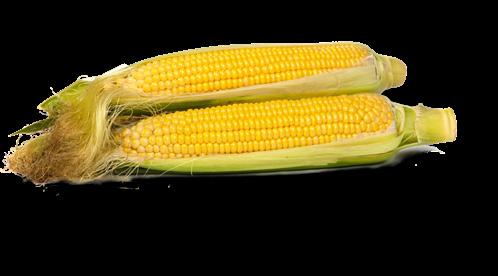
Throughout three seasons in Iowa, Rinehart’s Family Farm sells dozens of fresh fruits and vegetables.

Asparagus, Peas, Lettuce, Kohlrabi, Kale, Broccoli, Cauliflower, Carrots, Raspberries, Morel Mushrooms, Rhubarb, Potatoes, Spinach, Herbs, Flowers
TOMATOES ARE RAISED IN TWO 30-FOOT BY 96-FOOT HIGH TUNNELS, WHICH PROTECT THE CROP FROM THE ELEMENTS.

Tomatoes, Cherry Tomatoes, Strawberries, Sweet Corn, Green Beans, Peas, Kohlrabi, Eggplant, Bell Peppers, Hot Peppers, Radishes, Zucchini, Cucumbers, Flowers
Squash, Pumpkins, Garlic, Onions, Bell Peppers, Hot Peppers, Apples, Broccoli, Kohlrabi, Kale, Herbs, Tomatoes



 Family photos and memorabilia are displayed in the shop. Pictured is Frank Graziano, who was a third-generation family member to be involved in the business.
Family photos and memorabilia are displayed in the shop. Pictured is Frank Graziano, who was a third-generation family member to be involved in the business.
 By Darcy Dougherty Maulsby | Photos by Joseph L. Murphy
By Darcy Dougherty Maulsby | Photos by Joseph L. Murphy
Can a childhood trip to the local market influence the rest of your life? If the store is Graziano Brothers in Des Moines, the answer might just be yes.
“Growing up Italian American means food is a big part of your life, and Graziano’s was my favorite family field trip,” says George Formaro, a chef and restaurateur behind some of Des Moines' most successful eateries, including Centro, Django, Zombie Burger and Gateway Market.
“I was mesmerized by the sights, sounds and smells of the store, which still feels like home to me. Trips to Graziano’s helped shape me into who I am today.”
Chefs and home cooks alike rely on Graziano’s best-selling medium-hot sausage and other handcrafted sausages to elevate the flavor of their favorite dishes, from pastas to pizzas. The shop also carries a wide variety of Italian classics, including San Marzano tomatoes, imported Italian cheeses, pasta sauces, cured meats like pancetta and coppicola, plus a variety of sweets, including biscotti and cannoli.
From the outside, Graziano Brothers’ corner store looks much like it did when brothers Francesco (Frank) and Luigi (Louie) Graziano opened the business in 1912 on South Union Street.
“People look at our storefront and think we’re still a small mom-and-pop shop,” says Frances Graziano, who is the third generation of her family to run the business. “While we’ve expanded the business to include food manufacturing, wholesale distributions and retail sales, we still maintain a small, local family feel.”
The story of Graziano’s reflects the American dream. Frank and Louie Graziano, who were born in San Morello in the Calabria region of southern Italy, began their lives in a loving but impoverished family. By 1903, the two brothers immigrated to America. After Frank, age 21, and Louie, age 17, made their way to Iowa, they found jobs with the Great Western Railway.

Railroad work was tough, but it helped sustain the brothers, who settled in an Italian neighborhood in the “South Side Bottoms” south of downtown Des Moines. Never afraid of hard work, the Grazianos were entrepreneurs at heart. In 1912, Louie started a corner grocery in “Little Italy,” while Frank continued working for the railroad until the new business was established.
The Graziano brothers quickly became known for their homemade sausage, which they based on flavors they enjoyed growing up in Italy. “Graziano’s sausage is iconic in Iowa,” Formaro says.



As the brothers’ business grew, their shop became interwoven into the community. “School, church and my family’s store were all part of our community’s circle of necessities,” Frances says.
Her grandfather and great-uncle, and later her father, Mike served their friends and neighbors through good times and bad.
“Extending credit to customers during the Great Depression almost broke the business, but we still have descendants of those people who patronize our store and tell us how much that generosity meant to their family,” she says.

She didn’t realize how unique it was to grow up Graziano in Des Moines until she left home. “It was only when I was in college showing my ID to a cashier when I realized the influence of our family business,” says Frances, who earned her degree in music education/ music therapy from the University of Iowa. “The cashier asked if I was part of the Graziano family who makes the famous Italian sausage. I was dumbfounded. How did she know about us?”

For generations, customers have loved Graziano’s homemade, Old Worldinspired foods. Spicy, savory aromas greet visitors as soon as they step inside the shop. Many customers stop by to purchase Italian sausage made from high-quality pork and Italian seasoning. No preservatives are added to the sausage, which is sold in link, bulk and patty forms, with sweet, Andouille-style Cajun, garlic and extra hot flavors.
“Iowa farmers produce the best pork, which is one of the reasons our product is superior to other sausages,” Frances says.

Graziano’s products are available in Fareway grocery stores in Des Moines and surrounding areas. A number of Hy-Vee meat departments throughout Iowa carry Graziano’s medium-hot sausage. If you can’t find Graziano’s sausage at your

local Hy-Vee, speak to the manager and request these products, Frances suggests. During cooler months (September through April), Frances and her team of 15 employees ship products directly to customers. “We’re just a phone call away,” she says. “I also have some customers who use us as an excuse for a field trip to Des Moines to get their ‘Grazi fix!’”
Frances relishes the relationships she has formed with her customers through the years. “I feel privileged to be part of their lives. They’re like family,” she shares. That family includes Formaro. “I can’t imagine life without this place,” he says. “Graziano’s preserves our heritage, it’s an anchor to Iowa’s Italian community, and it can be enjoyed by everyone who loves great food.”
• 4 Graziano sausage patties or links
• 2 green bell peppers, seeded and cut into large sections
• 1 onion, peeled and cut into 1/2-inch rings
• 2 tablespoons butter


• 1/2 teaspoon garlic salt

• 4 hamburger or brat buns
• 4 slices provolone cheese (or 1 cup freshly shredded)
Preheat grill to medium-high heat. Add sausage patties or links. Add peppers and onions to grill, turning occasionally.
Add butter to bun sides and sprinkle with garlic salt. Toast buns over grill until golden. Set aside. Remove patties or links along with peppers and onions. Slice peppers into strips and separate onions into rings. Keep warm.
To assemble: Add warm Graziano sausage patty or link to the toasted bun. Then, add 1/4 of the pepper and onion mixture. Top with provolone cheese and bun top.
Se rvings: 4
Source: Frances Graziano

“Iowa farmers produce the best pork, which is one of the reasons our product is superior to other sausages.”
— Frances GrazianoA mural on the side of the shop on South Union Street in Des Moines.
A NEW INITIATIVE ENABLES CITIES
AND COMPANIES TO PAY FARMERS FOR POSITIVE ENVIRONMENTAL OUTCOMES
By Carl Peterson | Photos by Joseph L. MurphyConservation is at the forefront of everything that Lance Lillibridge does on his farm. Earthworms are a clear sign of soil health.
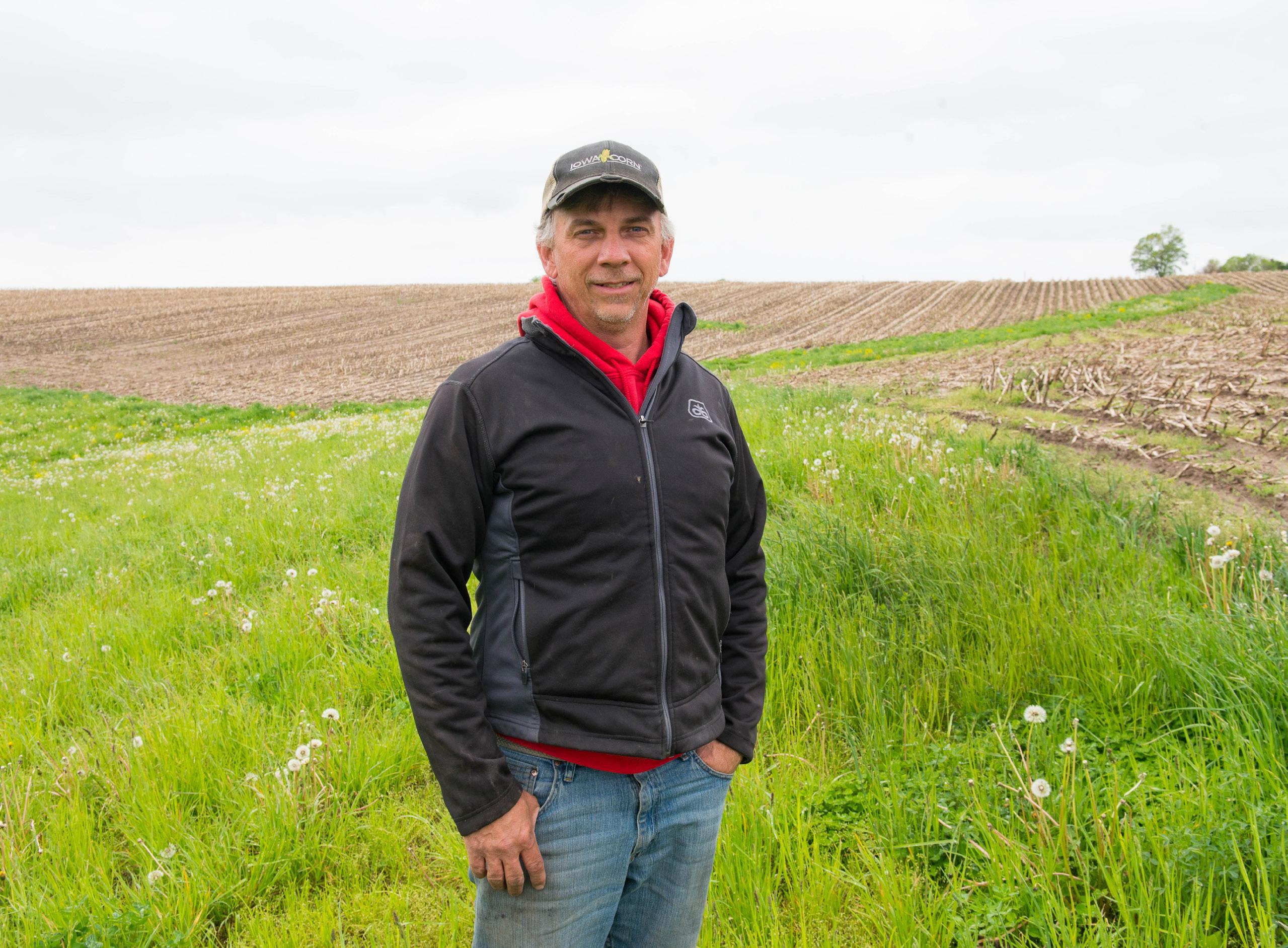
Earthworms, everywhere. That’s one difference that Lance Lillibridge notices on his farm northwest of Cedar Rapids. He sees more and more of the creatures each year.

“It’s crazy how huge our earthworm population is getting,” he says. “Go scratch the dirt in our field, and I guarantee you’ll find a worm within seconds.”
Earthworms may not seem like a big deal to some, but to Lillibridge it’s a clear sign that the sustainable practices he and his wife Heidi have implemented on their 450 acres of soybeans and corn over the last several years are having a real impact. It shows him that the biology of his soil is growing stronger, and for Lillibridge, healthy soil is a healthy future.
He started worrying about soil erosion early in his two-decade career as a full-time farmer, when he saw an unsustainable situation developing across the farming landscape.

“You looked at the rates of soil erosion and thought, wow, these farms are disappearing right before our eyes. Something’s got to change,” he says.
Lillibridge started addressing the issue by altering how he tills his soil. This not only reduces erosion, but also keeps the soil structure healthier and prevents carbon from being released into the atmosphere. Then he began experimenting with cover crops. And he bought new equipment. His giant tractor now places nutrients and seeds sideby-side with incredible precision to disturb the ground as little as possible while also minimizing fuel and fertilizer use.
“We don’t manage acres anymore – we manage inches,” he says.
The cost – which can be extremely high – has prevented him and many other farmers from going even further with conservation practices that show real benefits. Now, a new venture called the Soil & Water Outcomes Fund is helping with this problem, paying farmers directly for the ecological services their farm practices produce.
It’s a new way of thinking about what farmers should get paid for – not only the crops they grow but also for the positive environmental impacts they contribute. And it could be a breakthrough for farmers at a time when they are seeking to find ways to shift to more sustainable methods while also facing a very difficult economic landscape in agriculture.
The Soil & Water Outcomes Fund started with a simple premise: Help farmers and agriculture in general to be part of the solution to environmental challenges like climate change and water quality. Farms can’t operate at a loss. So, sustainability solutions need to work financially for farmers to adopt them.
This is the puzzle that Adam Kiel, director of conservation and external programs at the Iowa Soybean Association, and Mark Lambert, director of agriculture at outcomes-based investment firm Quantified Ventures, set out to solve last year. Kiel was working with municipalities in Iowa looking to improve their water quality and reduce flood risks.
FARMS CAN’T OPERATE AT A LOSS. SO, SUSTAINABILITY SOLUTIONS NEED TO WORK FINANCIALLY FOR FARMERS TO ADOPT THEM.Adam Kiel visits with stakeholders during a field day.
One of the first partnerships they established was with Ryan Sirolli, director of row crop sustainability at Cargill, a food and agriculture company. The company has a target of reducing greenhouse gas emissions in its global supply chain by 30% over the next decade. Sirolli was trying to find ways to equip farmers to reduce emissions, both to meet this target and as part of a broader Cargill effort to provide training and tools so farmers can keep their operations healthy and viable for the long term.
“We wanted to work in partnership because we know no one organization, community or farm could do it alone,” Kiel says. “It’s about sharing the cost and also sharing the benefits.”
The partners know that healthier soil can have a positive impact
on both water quality and carbon in the atmosphere. Stacked together, these two benefits reinforce each other. What if they could also team up to pay farmers to achieve them?

Fast forward to this crop year, and the new fund does just that. Farmers receive between $30 and $50 per acre when they adopt new practices that are proven to impact soil, water and air in positive and measurable ways.
That’s a big financial boost, and it’s what attracted Lillibridge to the fund for its first year. In total, Iowa farmers enrolled 9,400 acres. But based on what the partners learn this year, they hope to expand to 100,000 or more acres across Iowa next year. And over time, Sirolli sees an opportunity to bring similar programs to farms all over the world.
“We want to put farmers and ranchers at the center of this, because if these solutions work for them, they’ll scale up on their own,” Sirolli says. “Things like the Soil & Water Outcomes Fund are really exciting for us at Cargill because they show how farmers have this unbelievable potential to contribute positively to some of humanity’s biggest challenges.”
As the fund grows, many farmers in Iowa who are familiar with sustainable practices or have used them on a limited basis will be able to increase conservation efforts across a larger share of their acres.
“We’ve given these farmers a market signal to expand the use of these practices,” Kiel says. “It is a good value, especially with the current economic environment.”
An important thing to understand about sustainable agricultural practices is they take time to make an impact.
“Soil health is a long-term investment,” Sirolli says.
In other words, all those earthworms didn’t show up on Lillibridge’s farm overnight. That’s why he is committed to sticking with sustainability over the long haul – both because it’s good for the planet and because it’s just good for business. Healthy soil is more resilient, produces more crops and provides a better economic return.
“When I look at my field, that’s my retirement. That’s my 401(k),” he says. “I’m taking the best care of
it that I can, because someday I’ll need it to take care of me.”
The Soil & Water Outcomes Fund will give him the financial boost to make sure he can farm the way he wants to, with the future in mind. Lillibridge also hopes the fund will raise public awareness about how agriculture is key to everyone’s lives.
“When folks sit down at the dinner table, they should think about where that meal came from and how the food was produced,” he says. “If we don’t do things sustainably, the meal might be cheap right now, but I’m not sure it’ll be around for our grandkids.”
For more information on the fund, visit www.theoutcomesfund.com.
• Higher crop yields per acre
• Fewer costly inputs like fertilizer needed
• Greater resistance to drought and pests
• Better overall financial return
Farm activities can directly lead to environmental outcomes that are good for people and the planet. These are some of the activities that farmers are undertaking as part of their enrollment in the Soil & Water Outcomes Fund.
• Armoring the soil with cover crops and other plant matter
• Reducing tillage (turning over soil)
• Rotating among different crops more frequently
• Reduced carbon in the atmosphere
• Improved water quality
• Decreased water use on the farm
• Increased biodiversity
• Keeping living roots in the soil for more of the year with cover crops
• Integrating livestock into the system to graze and add manure
These practices create a rich soil full of microbes, nutrients and living matter that stores carbon, filters and retains water, and boosts plant growth.
 By Ann Thelen | Photos by Joseph L. Murphy
By Ann Thelen | Photos by Joseph L. Murphy
If the world-famous bridges of Madison County could talk, they would tell the stories of the farmers, innovators and builders who were the early settlers of this region. With its rolling hills and valleys, native grasses and botanical gardens, century farms and cultural landmarks, Madison County is a slice of iconic Iowa paradise. Locals are passionate about preserving the area’s charm and character.
Madison County is known for its covered bridges, which were built in the 19th century. Fame came to Madison County with the creation of Robert Waller’s best-selling novel, “The Bridges of Madison County” and subsequent movie of the same name, starring Clint Eastwood and Meryl Streep.
“The covered bridges were built between 1868 and 1884 so farmers could cross the county's rivers and streams. Many of the builders of the bridges were farmers,” says Teddi Yaeger, tourism and marketing coordinator for the Madison County Chamber of Commerce. “Covering the bridges helped preserve the interior
wooden trusses and floorboards, which deteriorated quickly in the severe weather of the Plains.”
After 1884, county supervisors ordered modern steel bridges as farming equipment grew more substantial. Over the years, most of Madison County's covered bridges were lost to floods, ice jams, fires, progress or willful destruction. With six of the original 19 bridges remaining, many steps have been taken to preserve these jewels of historical significance.

This south-central Iowa county boasts a plethora of indoor and outdoor attractions, arts and entertainment, anchored with a thriving agricultural community.

In Madison County, 20% of the residents are employed by agriculture or ag-related industries. Nearly 1,000 farms blanket the countryside with 271,017 acres of farmland, which are home to soybeans, corn, pigs and cattle. In addition, the region is popular for growing grapes, with three wineries producing native Iowa wines.
In the county seat of Winterset, one of Rose Acre Farms’ Iowa locations is prospering. The company began as a family chicken farm in Indiana in the 1930s and has grown to become the second-largest egg producer in the U.S. and the largest U.S. egg producer that is family-owned. Today, Rose Acre Farms has 17 laying facilities in six states, and the company produces a wide range of shell eggs, specialty eggs and egg products for retail, food service and industrial sectors. The company excels with its commitment to small-town values, quality products and service – an ideal fit for Madison County.

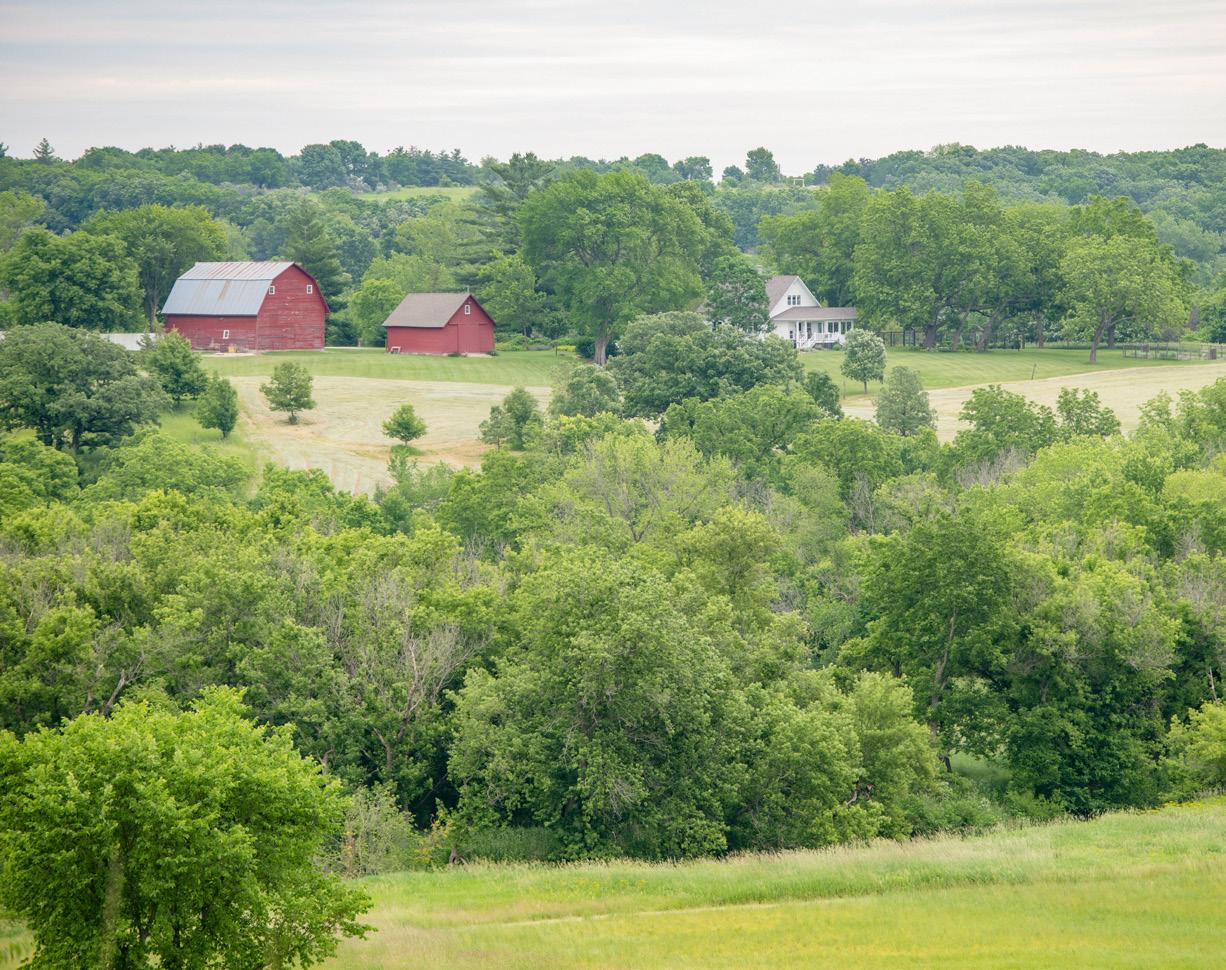
Located just 25 miles southwest of Des Moines, Groth’s Gardens and Greenhouses was established on the family’s Iowa century farm in 1993. Deb and Marvin Groth raise soybeans, corn and have a cow/calf operation. A former teacher, Deb began the business by growing fieldraised fall mums, pumpkins and ornamentals.
“After the farm crisis of the 1980s, we needed some supplemental income. We started with growing produce but quickly transitioned to flowers, and the greenhouse allowed more flexibility with our family,” Deb explains.

Today, Groth’s boasts more than 1,000 varieties of perennials and annuals, including their highly sought-after mums. Five large greenhouses and an outdoor nursery area are loaded with over 25,000 flowers and plants.
Around the square of the Winterset Courthouse District – which is on the National Register of Historic Places –120 magnificent, massive and vibrant hanging baskets are Deb’s creations. Every spring, volunteers hang the Supertunias®, colorfully named Vista Bubblegum, Silverberry and Fuschia. And unless there is one-half inch of rain, volunteers (including the mayor) water the baskets every day. Nearby, Howell’s Greenhouse and Pumpkin Patch is a farm covering 800 acres. For years, the rolling farmland and pastures were used for growing corn, soybeans, pigs and cattle. In 1985, the family began raising flowers specifically for dried florals. Today, those flowers cover more than 5 acres, and guests delight in touring the gardens, as well as the greenhouse, gift shop and the upper floor of Howell’s 1910 Barn, where the flowers dry. From goat cuddling to goat yoga, hayrides and pumpkin patch visits, Howell’s is a fun, family destination throughout the year.
South of Winterset, the rich soil is a fertile ground for PepperHarrow’s blossoming business. Sitting above the Middle River Valley, Adam and Jennifer O’Neal’s 20-acre farm is home to their family and acres of cut flower gardens. From sunflowers to dahlias to lavender, their creations are bouquets of beauty. Their flowers can be found at the Downtown Des Moines’ Famers’ Market, Gateway Market, florists in the Des Moines area and in Midwest weddings.
“I inherited my grandmother’s love of flowers,” says Jennifer, who spent much of her childhood on her grandparents’ farm and in their garden. She would help her grandmother arrange flowers for competitions and events, soaking up the precious knowledge that traveled across a generation.


Adam, originally from Louisiana, fell in love with Madison County when he accompanied Jennifer
to the Covered Bridge Festival, annually held in October. Students at the University of Colorado at the time, it wasn’t long after the couple married that they yearned to make Madison County home.
“Central Iowa got a grip on me,” Adam explains, who is a master gardener. “I was amazed at the soil and how fertile it is. We work hard to preserve the thriving ecosystem by using sustainable practices.”

John Wayne, Iowa’s very own Hollywood icon who was born in Winterset in 1907, can also take credit for elevating Madison County’s fame. Beyond movie star, “The Duke” was a farmer and spent time out on the range raising cattle and cotton. Although he farmed in Arizona, it was likely his Iowa roots that contributed to his passion for agriculture.
Since the John Wayne Birthplace Society was established in 1982, more than 1 million visitors from 50 states and 40 foreign countries have visited. The 6,100-squarefoot John Wayne Birthplace & Museum is adjacent to the home, where visitors can see the largest

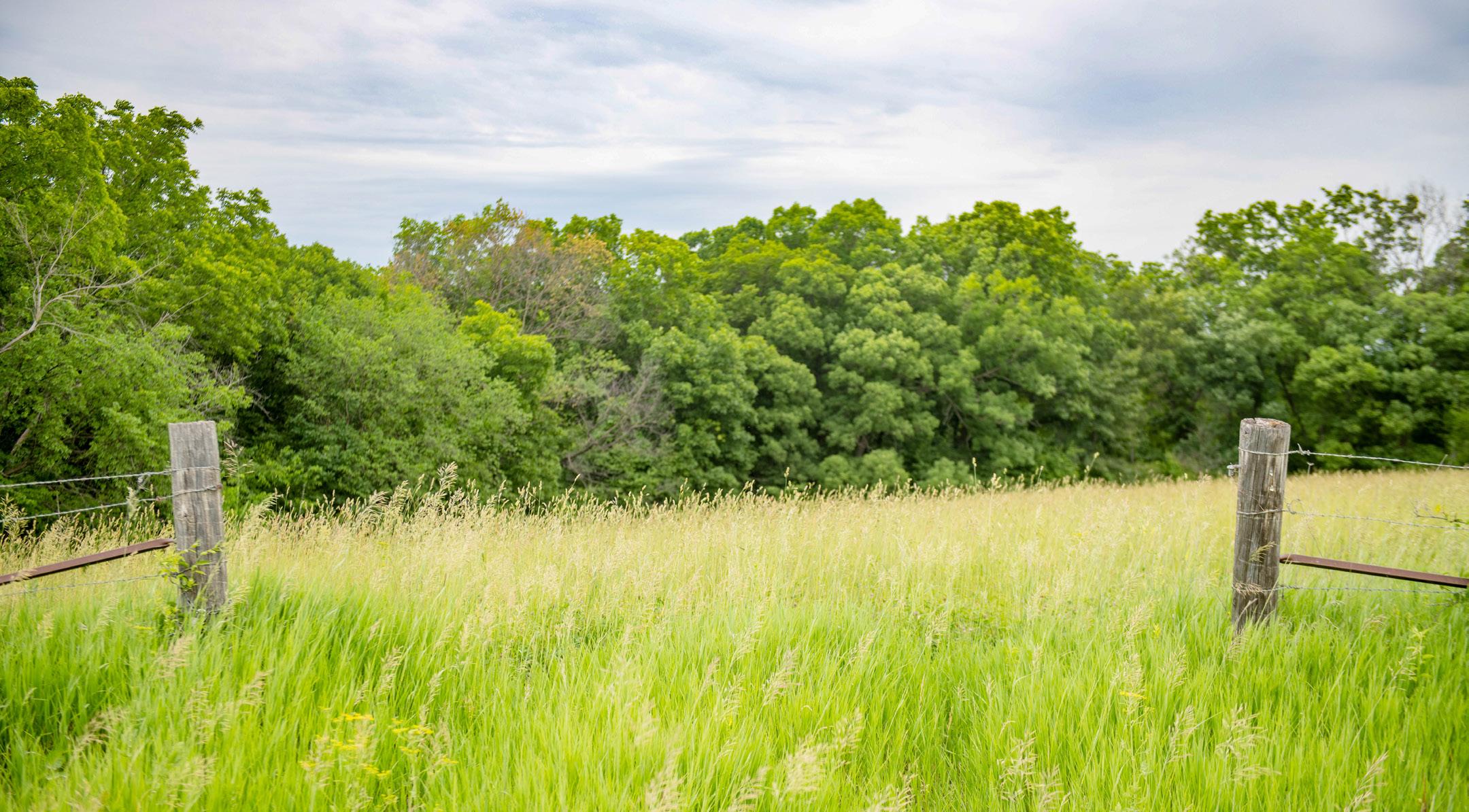
diversified exhibit of John Wayne artifacts in existence.
When George Clooney’s “The Monuments Men” hit the big screen in early 2014, Winterset was delighted to recognize a star from its history books. Clooney's character, Frank Stokes, was based on Winterset's own George Stout. Stout was a world-class expert of art preservation and restoration. His expertise was needed for reclaiming the thousands of pieces of artwork stolen by the Nazis across Europe. The George Stout Storybook Sculpture sits on the corner of Washington Street and First Avenue in Winterset, along the 82-mile Covered Bridges Scenic Byway.

Throughout the county, trails meander through tallgrass prairies, woodlands are carpeted with wildflowers and limestone ridges overlook stunning river valleys. Camping, biking, hiking and fishing are popular attractions.
Originally named the Hawkeye, it won a Stark Brothers’ competition where the judge declared it “delicious.”
On John Wayne Drive, the Iowa Theater’s vintage Art Deco marquee lights up Winterset’s beloved cultural icon. Before its glory days as an American cinema, the building was a onestory grocery and meat market, then a vaudeville playhouse in the early 1900s. Falling into disrepair over the decades, Marianne Fons of Winterset, and her daughter Rebecca, recently restored the theater to its former glory. From playing newly released box office hits to anniversary viewings of westerns starring Wayne, it’s a community treasure.
Situated in Winterset City Park (along with the Cutler-Donahoe Bridge, one of the original covered bridges), Clark Tower was erected in 1926 as a memorial to the county’s first pioneer family, Caleb and Ruth Clark. Constructed of native limestone, it stands 25 feet high and offers a commanding view of the Middle River Valley below. It is reachable by car or via a 2-mile roundtrip hike from the trail entrance point and back.

In East Peru, a town with no stoplights, an apple tree sits in the middle of an Iowa hayfield. It’s a sprout of the original Red Delicious apple tree, which was discovered on Jesse Hiatt’s Madison County farm.

“We’re proud that the iconic Red Delicious apple, which reigned as America’s favorite apple for more than 50 years, was first discovered on a farm in Madison County,” Yaeger says. According to the U.S. Apple Association, the Red Delicious remains as one of the 10 most popular apple varieties in the world.
With 350 sprawling acres in beautiful Van Meter, Bare Bison Ranch is a stunning spot for visitors. Tours allow visitors to experience this working farm up close and personal. Discover their operation, the care they take in every step of the farming process, and the power and beauty of bison – also called buffalo – on a guided tour. Madison County has it all. Quaint small towns, colorful scenery and an abundance of natural beauty, with a glamorous touch of Hollywood draped around this Iowa destination.
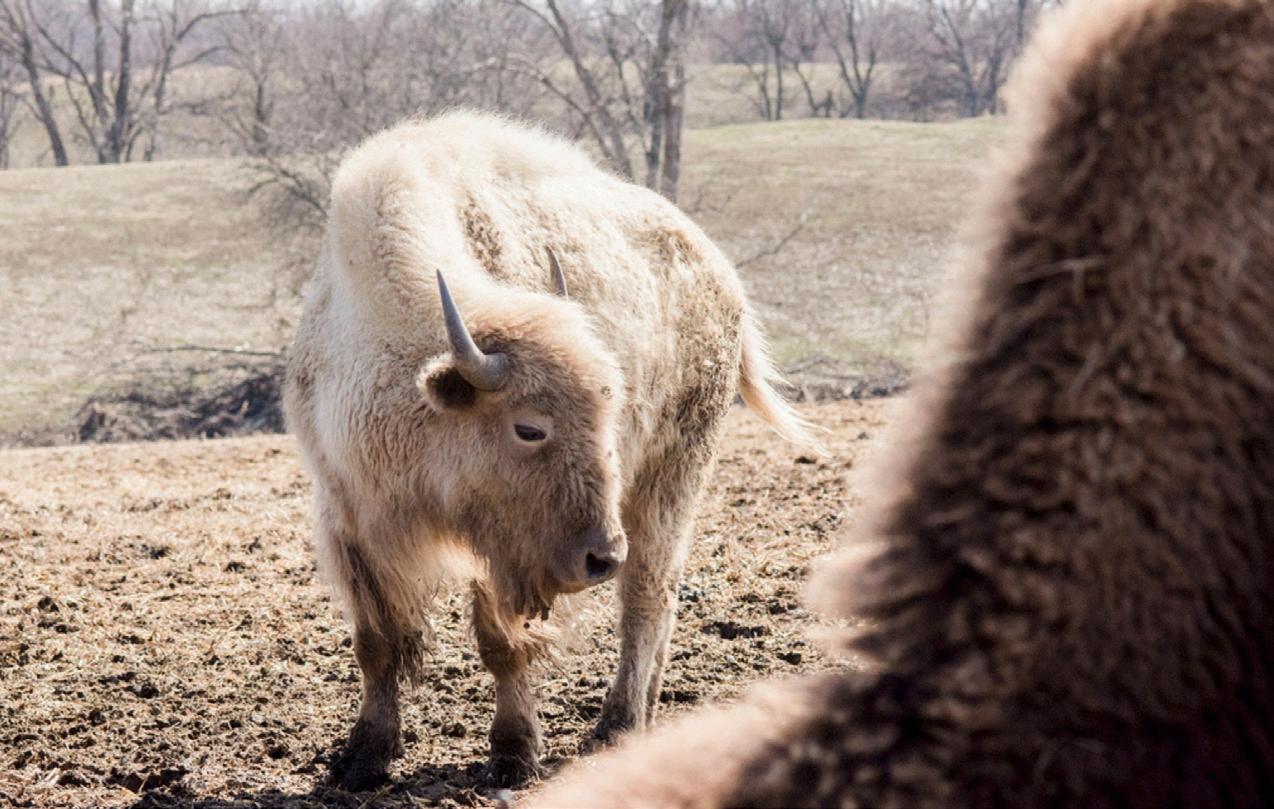

WHY YOUR CHOICE AT THE FUEL PUMP MATTERS
By Darcy Dougherty Maulsby | Photos by Joseph L. MurphyWant to save money? One of the easiest ways is to make small changes in your spending, say personal finance coaches. Want to feel better? Small changes in your daily habits can lead to big changes in your health, say medical professionals. One of the simplest ways to do both is to choose ethanol at the fuel pump next time you fill up your vehicle.
“Ethanol is better for your wallet, offering savings of 5 to 10 cents per gallon at most locations,” says T.J. Page, market development manager for the Iowa Corn Growers Association (Iowa Corn). “Ethanol is also safer for the planet and for human health. The American Lung Association estimates that using ethanol can reduce your family’s risk of cancer by up to 30%, due to reduced exposure to toxic emissions.”
You’re probably already using an ethanol blend in your vehicle, although you may not know it.
“More than 95% of gasoline sold
in the U.S. contains at least 10% ethanol,” Page says.
Northwest Iowa farmer Kelly Nieuwenhuis has opted for ethanol since it became available in Iowa in 1978. “My first car was a 1972 Chevelle, and I’ve run nothing but ethanol in it all these years,” says Nieuwenhuis, who has raised corn and soybeans near Primghar for 37 years. “That car loves ethanol.”
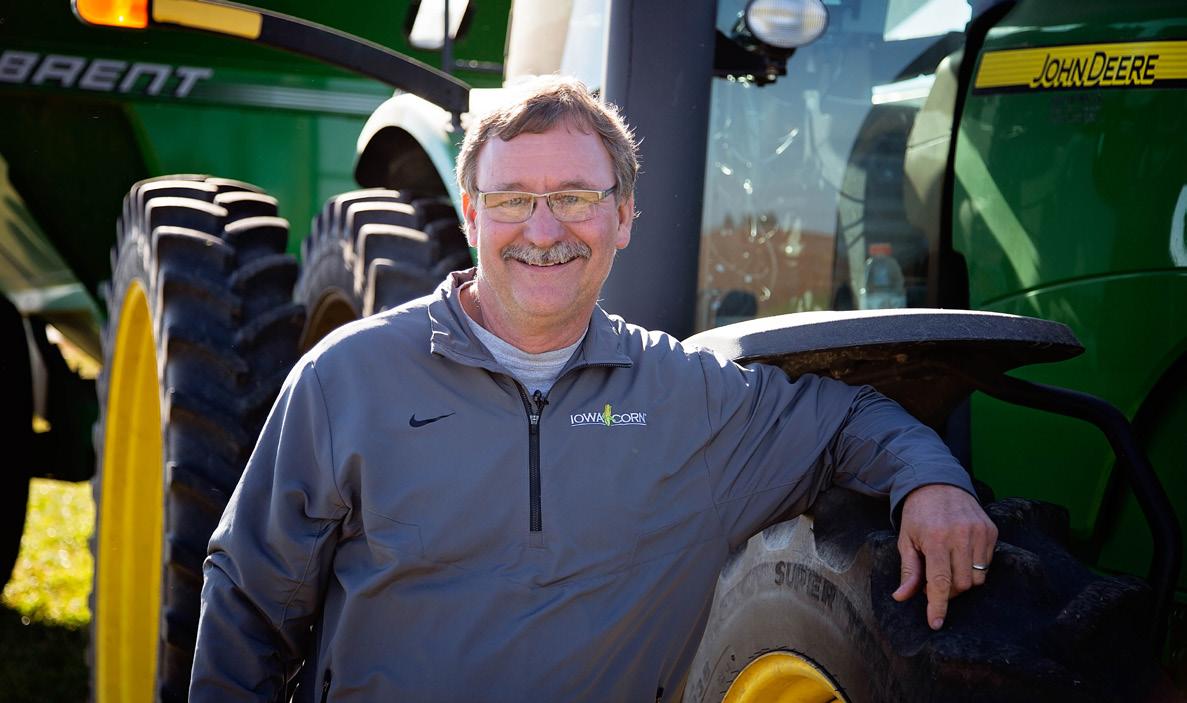
Casey’s General Stores became one of the first large retailers in Iowa to blend 10% of its fuel with ethanol, starting in the early 2000s. Ethanol blends are available at all of Casey’s 527 Iowa stores, as well as many Casey’s stores outside of Iowa.
“Our goal is to provide the fuel options that meet our guests’ needs,” says Nathaniel Doddridge, vice president of fuel for the Ankeny-based convenience store chain. “We’re proud to support Iowa farmers and the biofuels produced from the crops they grow.”
“ETHANOL IS BETTER FOR YOUR WALLET, OFFERING SAVINGS OF 5 TO 10 CENTS PER GALLON AT MOST LOCATIONS.”Kelly Nieuwenhuis is a northwest Iowa farmer and longtime advocate for ethanol. Photo courtesy of Iowa Corn.
Pull up to a fuel pump today, and you have a wide range of choices. That’s a good thing, although it can be a bit confusing with all those buttons, numbers and stickers on the pump. Here are the most common types of fuel and when they should be used, according to Iowa Corn:
E85. A fuel blend of 85% ethanol and gasoline. E85 is designed for use in flex fuel vehicles (FFV), which have a computer that automatically adjusts for the amount of ethanol in your fuel. Check your owner’s manual for fuel recommendations.
Unleaded 88/E15. A fuel blend of 15% ethanol and gasoline. E15 is designed for all passenger vehicles model year 2001 and newer. FFVs can also fill up with E15.
Super unleaded 87. Approved for use in all vehicles. In fact, it is the most commonly used fuel in the U.S. This fuel usually contains 10% ethanol (E10). Ethanol is added to regular unleaded fuel as an oxygenate to help reduce carbon monoxide and soot. It is also approved for small engines, such as lawn mowers, boats and motorcycles.
Premium unleaded. Usually only recommended for cars with high compression engines, such as sport or luxury vehicles. Unless specified in your owner’s manual, using a premium blend offers little to no benefit. This fuel may also contain 10% ethanol.

ETHANOL PROTECTS THE PLANET BY REDUCING GREENHOUSE GAS EMISSIONS BY 43%, COMPARED TO GASOLINE.



Iowa leads the nation in ethanol production, creating nearly 30% of all U.S. ethanol, according to Iowa Corn.
Ethanol provides a variety of benefits. It adds oxygen to fuel, which helps fuel combust more completely in the engine. This cuts the levels of toxic emissions and harmful particulate matter from the exhaust. “That means cleaner, healthier air for all of us,” Page says.
Ethanol protects the planet by reducing greenhouse gas (GHG) emissions by 43%, compared to gasoline. “Simply using ethanol in the U.S. in 2019 was like
removing 11.5 million cars from the road for an entire year, in terms of GHS emissions,” Page adds. “That’s the equivalent of removing nearly all of the registered vehicles in New York and Florida.”
Higher blends of ethanol keep driving the renewable fuels industry forward. NASCAR has surpassed 15 million competition miles on E15 since 2011. “Ethanol is octane that provides serious power for your engine,” Nieuwenhuis says.

Casey’s continues to offer higher ethanol blends at select sites in Iowa, Illinois and Kansas. Options include E15, which contains 15% ethanol and works
well for all passenger vehicles model year 2001 and newer. Casey’s also offers E85, which contains up to 85% ethanol. “We started with 17 locations selling E15 and E85, and now we’re up to 247 stores,” Doddridge says.
This means more options for motorists and more opportunities for Iowa corn growers. “Ethanol is the best thing that’s ever happened to my farm,” says Nieuwenhuis, an Iowa Corn Promotion Board director and president of the Siouxland Energy Cooperative, a farmer-owned ethanol plant in Sioux Center. “Producing renewable fuels in Iowa also contributes to America’s energy independence.”
Biodiesel is another form of homegrown, renewable fuel. Instead of using corn, it’s made from vegetable oils like soybean oil.
“Soy biodiesel has become a really good product for us,” says Nathaniel Doddridge,
vice president of fuel for Casey’s General Stores. “In 2017, we had 10 stores that sold biodiesel. Today, we have more than 800 locations across the Midwest that sell biodiesel.”
Iowa leads the nation in biodiesel production,
supplying an estimated 345 million gallons in 2019, according to the Iowa Biodiesel Board.
“We continue to offer more soy biodiesel as Casey’s expands into more states, including Arkansas and Oklahoma,” Doddridge says.

Homegrown solutions are also important to Casey’s, which continues to invest in rural America. “Rural is at the heart of what we do,” Doddridge says. “About 60% of the communities we serve have a population of 5,000 people or fewer.”
Many people come to Casey’s not only to fill up their fuel tank but also to enjoy their famous pizza. This menu option debuted in the mid-1980s, when a Casey’s store began serving pizza to offer something beyond standard convenience-store fare like hot dogs.
“Quality is essential to the Casey’s brand,” says Doddridge, who notes that each store has its own kitchen. “We use 100% mozzarella cheese and pizza dough that’s made from scratch every day.”
Casey’s has become the fifthlargest pizza chain in America. It’s a milestone for America’s fourth-largest convenience
store chain, which operates more than 2,200 stores in 16 states. Casey’s continues to evaluate new ways to serve customers more effectively, from food to fuel.
“We’re opening 60 to 80 new stores across the Midwest and South each year,” Doddridge says. “Every new store we open will include higher ethanol blends, including E15 and E85.”
Ethanol’s advantages go far beyond fuel, says Nieuwenhuis, who notes that 48,000 jobs in Iowa are directly connected to the ethanol industry. Each bushel of corn transformed into ethanol also produces animal feed for beef cattle, dairy cows, pigs and poultry. Many ethanol facilities also produce corn oil for human consumption.
“When we make ethanol, we’re making fuel, feed and food – all from the same bushel of corn,” Nieuwenhuis says. “Ethanol is all about people, planet and performance.”
HOW MUCH GOOD COMES FROM 1 BUSHEL OF CORN, PROCESSED AT AN ETHANOL PLANT?
2.9 2.9 GALLONS OF ETHANOL
.8

.8 POUNDS OF CORN OIL
15.8
15.8 POUNDS OF DISTILLERS GRAINS FOR LIVESTOCK FEED
and Enjoy
SOYFOODS ARE ON THE MENU, WITH RESEARCH
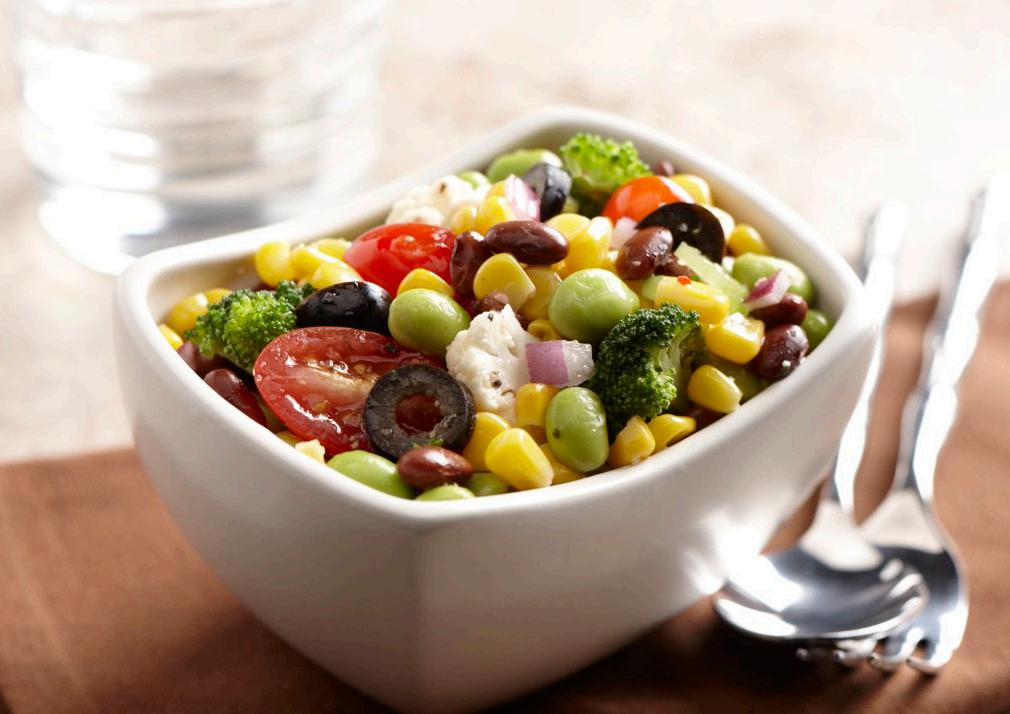
SHOWING NUTRITIONAL AND HEALTH BENEFITS
By Ann ThelenSoyfoods have long been a staple in Asian cuisine and are now popular among American consumers. Numerous studies show that consumption of soyfoods among all ages continues to rise, especially among millennials. It is with good reason. Soy is a nutritional powerhouse, fitting into every diet preference and stage of life.
Edamame has become the darling of soyfoods with its showstopping attributes. This young, green soybean is so popular that paint manufacturers even name
palettes after the legume. One company aptly describes edamame as “a lush green with an organic green undertone.” Although the beautiful soybean has been in the U.S. for more than a century, its recent fame is due to resounding nutritional benefits and subtle flavor.
Beyond edamame, there’s a lot to love with soyfoods’ other superstars, including soynuts, black soybeans, tofu, tempeh, TSP/TVP (textured soy protein/ textured vegetable protein) and soymilk.
• 1 12-ounce package frozen corn, prepared according to package directions
• 1 cup celery, diced
• ½ cup red onion, diced
• ½ cup black olives, sliced
• 1 cup broccoli florettes
• 1 cup cauliflowerettes
• 1 15-ounce can black soybeans, rinsed and drained
• 1 cup grape tomatoes, halved
• 1 16-ounce package shelled edamame, prepared according to package directions
• 1 package of zesty Italian dressing mix, prepared according to package directions
In a large mixing bowl, add all vegetables, toss together. Add dressing, toss lightly. Cover, place in refrigerator, marinate overnight.
Servings: 6-8
Source: The Soyfoods Council
1 Soyfoods are filling. One serving of soy offers approximately 7 to 15 grams of protein.
2 Soyfoods are everywhere.
Eating soy is easy, with options found in nearly every aisle of the grocery store.
3 Soyfoods are versatile. From serving as a side dish to being incorporated in soups, salads, breads and desserts, soyfoods suit contemporary lifestyles.
4 Soyfoods are nutrient rich.
Filled with B vitamins, iron, zinc, potassium and an array of antioxidants, soyfoods pack a nutritional punch.
5
Soyfoods are heart healthy. Containing healthy fats, they have been linked to lowering cholesterol and the risk of cardiovascular disease.
The dramatic rise in the popularity of soyfoods that began in the early 1990s didn’t occur without some controversy. Many experts were excited about the possibility of incorporating more soyfoods into the U.S. diet. The excitement was in part because in Asian countries, such as Japan, people were eating more soy and had lower rates of heart disease, breast cancer and prostate cancer. However, those types of observations or associations don’t demonstrate cause and effect. So, global research ensued to dig into the facts.
Researchers discovered isoflavones, which are naturally occurring plant compounds found in large amounts in soybeans and are classified as plant estrogens or phytoestrogens. This recognition led to unsubstantiated concerns that soyfoods could increase the
risk of developing breast cancer, decrease testosterone levels in men and impair thyroid function. However, over the past decade, human studies show these concerns are without scientific foundation. Not surprisingly, health agencies throughout the world have concluded that soyfoods are safe. In fact, there is evidence that soy reduces the risk of developing prostate and breast cancer.
Mark Messina, Ph.D., is an internationally recognized expert on the health effects of soy and executive director of the Soy Nutrition Institute. Messina was a program director at the National Cancer Institute where he initiated a multimillion-dollar research program investigating the role of soy in cancer prevention. He breaks down three common myths about soyfoods.
“New research shows that breast cancer patients who consume soyfoods after their diagnosis fare better than patients who do not consume soyfoods. The position of both the American Cancer Society and the American Institute for Cancer Research is that breast cancer patients can safely consume soyfoods,” Messina says. “Studies also show that girls who consume soy during childhood and/or adolescence are less likely to develop breast cancer later in life.”
“Soyfoods do not contain estrogen, and clinical evidence shows soy doesn’t lower testosterone,” he says. “The myth may be rooted in the fact that naturally present isoflavones in soyfoods are commonly referred to as plant estrogens. Soyfoods may offer health benefits for men, including protection against prostate cancer.”
“The conclusion of numerous global scientific bodies, including the U.S. Food and Drug Administration (FDA), is that soy does not adversely affect thyroid function,” Messina says.
• ½ whole wheat pita pocket
• 1 tablespoon soynut butter
• 1 tablespoon apple butter
• 6 apple slices
Spread soynut butter and apple butter on pita half.

Arrange apple inside pita.
Servings: 1
Source: The Soyfoods Council
Nutrition per serving: 231 calories, 7 g protein, 38 g carbohydrates, 6.5 g fat
Soy protein is a complete protein, meaning it provides all nine amino acids. These amino acids are building blocks of protein, which your body can’t produce in sufficient quantities on its own. They are vital for many functions, such as tissue repair and muscle building. The FDA officially recognizes that 25 grams of soy protein a day, as part of a diet low in saturated fat and cholesterol, may reduce the risk of heart disease.
Potassium
One of most important minerals in the body, regulates blood pressure and may protect against stroke.
Helps tissues grow and cells work, along with forming red blood cells.
An essential fatty acid that has been cited in reducing and heart disease risk.
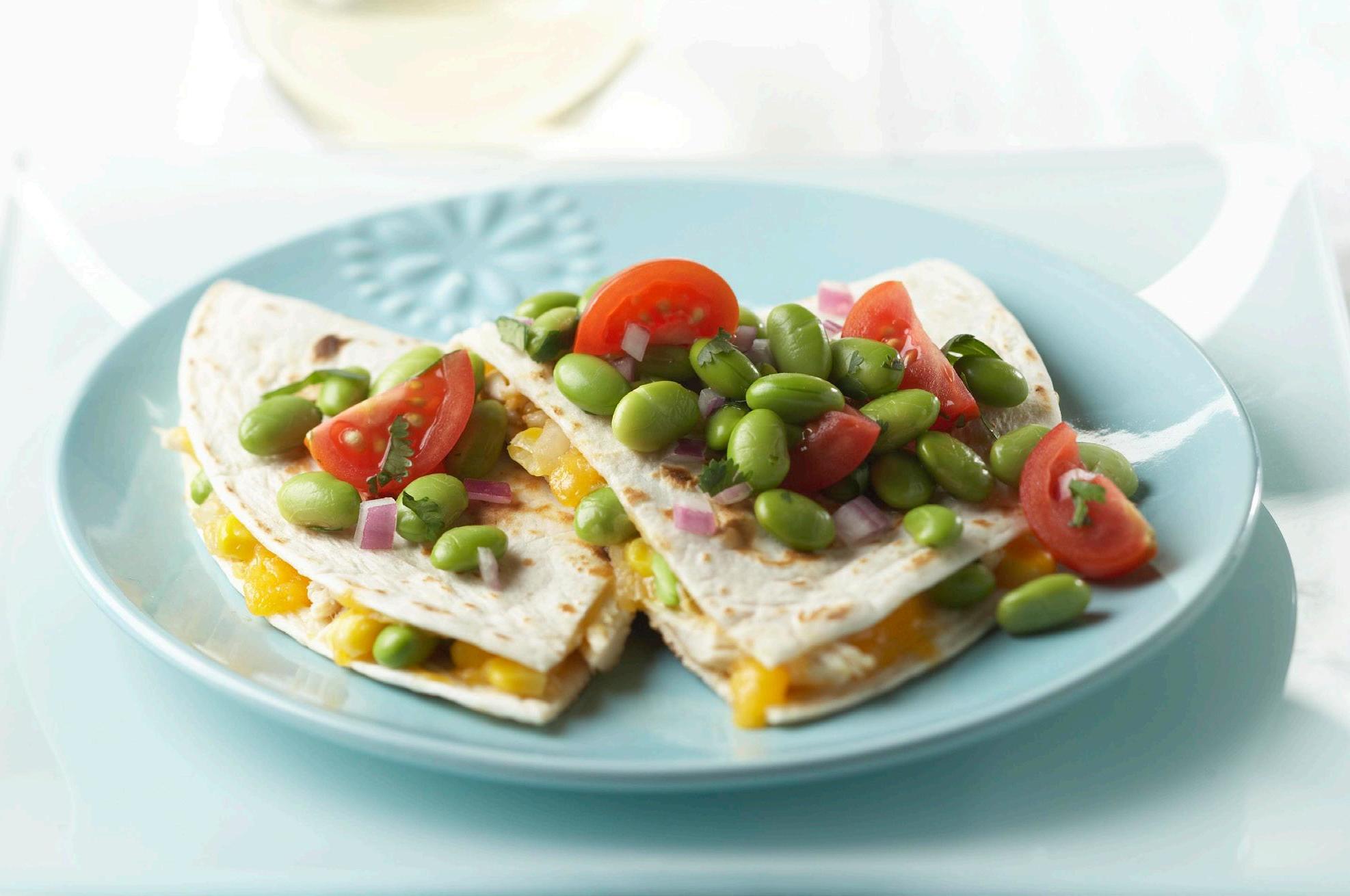
TOPPING
• 2 cups frozen shelled edamame
• 1 pint cherry tomatoes, quartered
• 1/4 cup red onion, finely chopped
• 1 tablespoon fresh lime juice
• 2 tablespoons fresh cilantro, finely chopped
• 1/2 teaspoon salt
QUESADILLA
• 2 tablespoons soybean oil (vegetable oil)
• 1 cup onion, chopped
• 2 garlic cloves, minced
• 1 (8 3/4-ounce) can corn kernels, drained
• 2 cups shredded cooked chicken, such as rotisserie chicken
• 1 1/2 cups shredded Mexican four cheese blend
• 1/4 teaspoon salt
• 6 (7-8 inch) flour tortillas
To make the topping: Bring 2 quarts of lightly salted water to a boil in a medium saucepan over high heat. Add the edamame, return to a boil and cook until tender, 6-7 minutes; drain and rinse under cold water then drain again. Transfer edamame to a bowl and stir in the tomatoes, onion, lime juice, cilantro and salt; mix well and refrigerate until ready to serve.
Heat the oil in a large nonstick skillet over medium-high heat. Add the onion and garlic; cook, stirring occasionally, until starting to soften, 2-3 minutes. Add the corn and cook 2 minutes longer. Transfer to a bowl
and stir in the chicken, cheese and salt; mix well.
Put one tortilla on a work surface and spread the lower half of it with 1/2 cup of the chicken mixture. Fold the top half of the tortilla over the filling to form a semi-circle. Repeat with the remaining tortillas and chicken mixture.
Wipe out the skillet with a paper towel and return to the stove over medium heat. Add the quesadillas 2 at a time and cook 3-4 minutes per side or until lightly golden and hot. Divide among 6 plates and top each with 1/2 cup of the edamame topping.
Servings: 6
Source: The Soyfoods Council
Nutrition per serving: 486 calories, 31 g protein, 43 g carbohydrates, 7 g fiber, 22 g fat, 9 g saturated fat

Breakfast: Oatmeal, smoothies, fruit parfaits and cereal offer effortless opportunities to be creative with soy. To make oatmeal creamier, stir in some silken tofu, and then add dried cranberries, maple syrup and soymilk. The result is a delicious, protein-rich breakfast that will carry an appetite through until lunch.
Lunch: Cool off in the summer heat with a bright, crisp salad. Take romaine hearts, watermelon, blueberries, basil, pecans and cucumber and elevate the dish to extraordinary with a basil lime dressing. Made with soft silken tofu, yogurt, oils and spices, the velvety dressing adds flavor and protein.
Dinner: Head to the deck to grill pork or steak kabobs along with some skewers of tofu and garden vegetables. Serve up a chilled side dish of Iowa-grown sweet corn taken off the cob, combined with edamame and freshly picked cherry tomatoes. Add some favorite herbs and spices, and this vibrant trio is a feast for the eyes and a delight for the taste buds.
Snacks: With a punch of protein in every bite, roasted soynuts are easy snacks to have accessible at work or home. Chocolate-covered soynuts satisfy between-meal and sweet-tooth cravings. Or, spread some soynut butter on whole-grain crackers. For recipes, such as brownies or cookies that call for all-purpose flour, substitute some soy flour. Instead of using 1 cup of all-purpose flour, use 3/4 cup of it and 1/4 cup soy flour. The taste and consistency of the recipe will be the same. A great cookie modification is if a recipe calls for 3 cups oatmeal, use half oatmeal and half TSP/TVP for extra protein and a great crunch.
“Soyfoods go with everything –meat, vegetables, desserts – the possibilities are endless,” says Linda Funk, executive director of The Soyfoods Council. She shares some easy ways to incorporate this superfood into snacks and meals.
Random acts of kindness haven’t been so random since COVID-19’s unwelcomed arrival in America.
• Farmers have donated pigs helping food banks provide much-needed protein to people in need.
• Families have gathered around kitchen tables to transform strips of cloth into facemasks to aid healthcare workers.
• Breweries have reconfigured operations to manufacture hand sanitizer in place of pale ales.
• Children have created murals made from sidewalk chalk and painted and distributed “kindness rocks” throughout neighborhoods providing muchneeded encouragement during a time of great distress.
• Anonymous good Samaritans have generously settled outstanding bills to provide relief to those struggling to make ends meet.
Each act of kindness may seem somewhat small and insignificant when compared to the enormity
of the challenge. But never underestimate the big difference a little something can make.
The big impact of small things was top of mind when Kelly Visser, editor of Fresh Pickings , approached me with this column assignment. At first, I struggled with making her idea for a focus on pesticides relatable to readers.

Yet the thought of just a little something having tremendous benefit seemed to apply. It’s true when sharing acts of kindness during a pandemic. And it has merit when describing how advancements in chemistry are enabling farmers to use smaller amounts of products while increasing the production of safe and nutritious food.
Fruits, vegetables and crops like corn and soybeans are extremely vulnerable to pests, diseases and weed infestations. All are yield robbers. If left unchecked, production is greatly reduced and prices paid by retailers and shoppers increase.
It’s best to avoid lose-lose scenarios.
INNOVATION HAS BIG IMPACTS IN FARMING AND STARING DOWN A PANDEMIC
Thankfully, like most things we use to live, work and play, products farmers use have also continuously improved over the years. As a farm kid, I vividly remember helping my dad prep to spray the crops by filling the tank with water before he went to the field. To this day, I don’t truly understand what he was mixing or spraying. What I do recall is maneuvering hoses, shutting off the hydrant when water levels reached the appropriate fill line and that spraying crops was dirty work (the tractor dad used didn’t have a cab).
Over the past 40 years, crop protection products farmers depend upon and how they use them have improved dramatically. Most notable has been reducing the amount of product needed to effectively manage pests and diseases. That appeals to consumers and to farmers, as well. After all, there’s no economic incentive to wasting time, money, effort and product.
I’m no threat to the scientific profession – I’m not a scientist and never will be. But I do know enough to understand that active ingredients are what make crop protection products work. Decades of research, improvements in chemistry and
greater awareness about the need to conserve resources (including water and fuel used to apply them) have motivated scientists to dramatically decrease the amount of pesticide farmers must apply. So, what once took gallons of product to tackle a weed, disease or insect pressure covering an acre or more can now be accomplished using just ounces (for perspective, an acre is about the size of a football or soccer field).
Even more exciting is the growing use of seed coatings and biologicals in protecting our food supply while it’s most vulnerable to pests and diseases.


Treating seed with a protective coating puts product precisely where it’s needed at the very start of the growing season. Biologicals use living organisms like microbes found in nature. These tiny micro-organisms, including viruses, bacteria or fungi, can have pesticide-like qualities that can protect the health of the plant.
Farmers are also taking to the air and their computers to better protect their investment. Drones collect timely and vital information about what is going on in their fields not readily visible from the end rows or road. With that knowledge, farmers and agronomists can use crop protection products at precisely the right time, location and amount. Product labels have come a long way, too, providing specific guidance to farmers and agronomists to ensure products are used safely and sparingly.
The world is full of unknowns, especially during a pandemic. Given all there is to worry about, the safety and abundance of food shouldn’t be among them. The use of crop protection products to stay ahead of bugs and diseases is a big piece of this equation. And it’s being done safely and effectively.
Now, get about doing a random act of kindness. Unlike the use of crop protection products, the more the better!